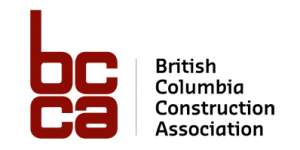Construction File:
Use of Standard Documents Reduces Risk
When documents contain clauses that discourage contractors from bidding, raise the costs associated with bidding, add onerous risk, or limit the competition to a select few bidders, it may come at a cost to the owner. Such an outcome creates the potential for unfairness or misuse of public funds.
Quality construction depends on quality contracts, so we must work together to ensure that the proper standards are adhered to by all—not just in the construction of the project, but also in the construction of the project documents. Standard construction document conditions generally limit the risks of the contractor to those, which can be reasonably foreseen by an experienced and competent contractor. Such risks would include compliance with regulations; construction defects; sub contractor/supplier mistakes; completion dates; and labour and materials issues.
Often the contractor is asked to take on additional risks, and the bid price could be inflated to reflect these risks. Care must be taken not to accept or impose such risks indiscriminately. Inappropriate allocation might simply result in no allocation at all.
Proper allocation of risk is essential in all contractual relations. In the private sector, it is primarily the business of those parties who are signatory to the contract documents. It is assumed that such parties are operating on an even playing field, and therefore must accept or refuse risk as they see fit. With public construction, however, there is more at stake. Public agencies are expected to operate in a fair, accountable and transparent manner. It is in the public’s best interests that unnecessary litigation is avoided, and that risk is dealt with in such a manner as will best protect the public.
Using well-established industry standards when preparing construction documents will mean that those very contractors and trade contractors you wish to attract as bidders will continue to be interested in bidding.
Using Standard Document approved by the Canadian Construction Documents Committee (CCDC) or Canadian Construction Association provides:
- A fair allocation of risk
- Clarity of obligations
- Responsibilities acceptable to all parties
The use of standard documents results in:
- Fewer disputes
- Fewer delays
- Reduction in the cost associated with drafting, implementing and bidding on projects
with new contracts
There are industry accepted standard contracts such as the CCDC-2 that provide a balanced approach to risk allocation. We recommend the use of such standard documents. They have been expertly developed by industry in consultation with other stakeholders, including owners (4 representatives), design professionals (7 representatives), and contractors (4 representatives). Consequently, the documents provisions for risk management are appropriate and equitable.
For information on standard documents and industry standards refer to ‘A Summary Guide for BC Construction Industry Standards and Guidelines’ on the BCCA website.
Note: Standard document development is supported by the funds generated from the sales of these documents. Hence, it is in the industries best interest to ensure that any standard documents comply with the copyright requirements of the sponsoring organization.


